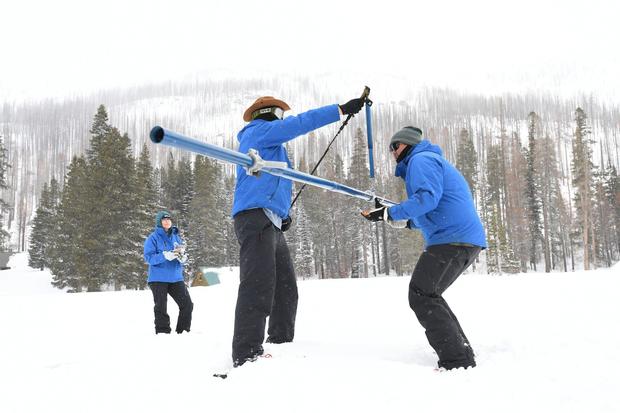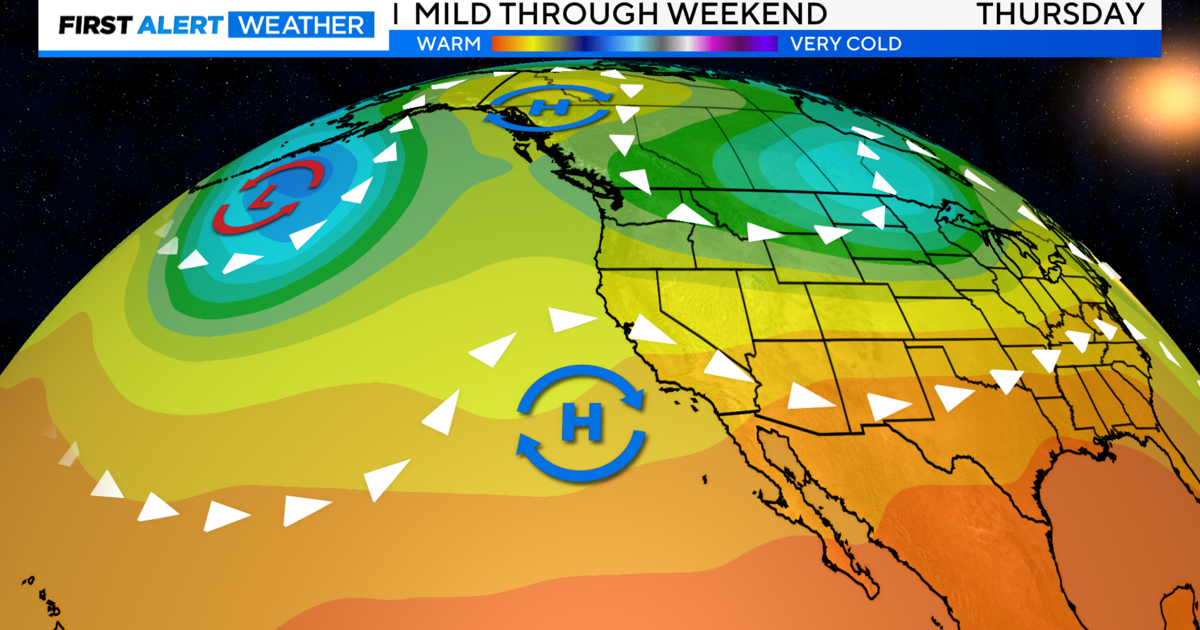Epic California snowpack among biggest on record, officials say
PHILLIPS STATION — This year's epic snowpack in California's Sierra Nevada could top records, state officials said Monday, and significant flooding is expected when it melts and flows down from the mountains.
Just months after the state was dangerously deep in drought, its reservoirs are filling, with the snowpack yet to melt.
The water content of the statewide snowpack as reported by a network of automated sensors on Monday was 237% of average to date, said Sean de Guzman, water supply forecasting unit manager for the California Department of Water Resources.
That is greater than any previous April reading since the sensor network was deployed in the mid-1980s, de Guzman said. Manual measurements on "snow courses" date back to 1910 and only the years 1952, 1969 and 1983 showed a statewide result greater than 200% of average in April.
The record 1952 measurement was also 237% of average, but there were fewer snow courses measured then and the addition of others over the years makes it difficult to compare across decades results with precision, according to de Guzman.
Manual measurements continue to the present day, but weather and other dangers, including the threat of avalanches, have prevented access to some locations.
De Guzman said the state is waiting for more survey results to come in from partners including the National Park Service, the U.S. Forest Service and utility companies.
"But as of right now it's looking like this year's statewide snowpack will probably, most likely be, either the first or second biggest snowpack on record," said de Guzman, who conducted a manual measurement on snow course at Phillips Station near Lake Tahoe.
California was three years into drought, with dwindling reservoirs and parched landscapes, until an unexpected series of powerful storms including more than a dozen atmospheric rivers began in December.
While causing widespread damage, the storms also built the extraordinary Sierra snowpack, which supplies about a third of California's water. Reservoir storage statewide is now 107% of average.
"The real challenge as we move into spring and summer though is flooding — significant flooding — particularly in the Tulare Lake Basin," said Karla Nemeth, director of the Department of Water Resources.
The basin once held Tulare Lake, a vast body of water in the Central Valley below the western slope of the Sierra. Settlers began draining it or diverting its water sources in the 19th century, converting it to farmland. The lake has already begun to reemerge due to this year's runoff.
Snowmelt runoff projections will be released next week, but de Guzman predicts records will be broken. That will include "an absurdly high 422% of average" for the Kern River watershed, which drains into the southern end of the Central Valley, he said.




